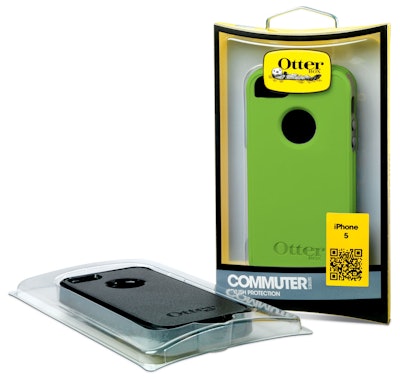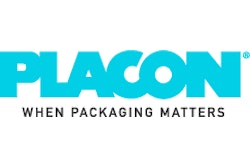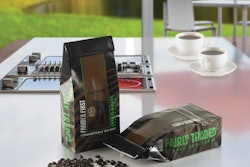
As sales of cell phones and other mobile devices have blossomed in recent years, so too have sales of the protective cases used to keep such devices free from damage. Among the leading suppliers in this product category is Otter Products LLC. Based in Fort Collins, CO, Otter Products recently redesigned the packaging it uses for its OtterBox series of protective cases. Gone is a paperboard solution that tended to get a little shopworn over time and in its place is a two-part PET solution that has brought not only a dramatic improvement in on-shelf merchandising but also an immediate uptick in sales. It’s a classic example of a manufacturer willing to invest significantly in better packaging because it was clear that the payback was there to be had.
“I would say at this point that the new packaging is probably 80% more costly than the two-part paperboard package—folding carton and molded-pulp insert—that we used before,” says packaging engineer Josh Caldecourt. “In my opinion, the packaging used previously was not a good reflection of our brand. I think now we have adjusted that in the right direction and by the right amount. It’s easy enough to justify when you look at the results. We did changeovers at Best Buy and Walmart that amounted to a complete planogram wipe, a fresh new look executed overnight. The data showed a 10% lift in sales almost immediately.”
It should be noted that these are not inexpensive products. The suggested retail price is anywhere from $20 to $100, which means that having to pay another 20 cents or so per package is not as significant as it would be if the product had a price point significantly lower. Even so, this new and improved packaging represents a significant investment. It was a huge decision to move ahead with the change, and Caldecourt and company should be commended for their willingness to invest in packaging the way they did.
In migrating from paperboard to plastic, Caldecourt worked closely with Wynalda Packaging, the maker of the outer carton, and thermoformer Placon, a specialist in rapid prototyping and advanced production tooling that makes the clear inner tray.
The outer carton is offset-printed on a sheet-fed press. “To get that beautiful opaque yellow,” says Caldecourt, “we give it multiple hits of white, then yellow, then black, and finally the series color—a green band for the Defender Series, blue for Commuter, and orange for Reflex. You’ll often see a package like this with reverse printing, but we like the look of surface print and a matte coating that protects it.”
Hot-foil stamping is next, which is followed by die cutting and then a folder/gluer. The hot-foil stamping material, which comes from Crown Roll Leaf, is what gives the finished product a half-inch square holographic anticounterfeiting component on its top flap. Also done during die-cutting is an embossing step that gives a nice 3D tactile quality to the cute little otter floating in a pool of the company’s signature yellow.

























